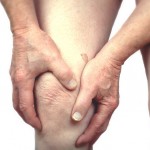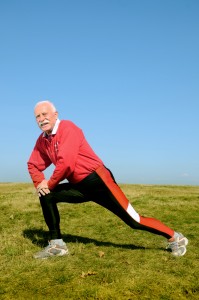
We learnt in an earlier post about the burden of musculoskeletal conditions that osteoarthritis (OA) develops around the age of 50. Blimey some of our elves are approaching that age. What can we do to help any symptoms that start to develop?
We eleves are always looking to stay fit and thought that exercise might help. But what is the evidence for this? A recently updated review from the Cochrane Muscuoskeletal review group was just the thing to help us.
Here’s what they did
This was an update of a previous review and the authors searched 5 databases up to May 2013. They defined exercise as any land-based non-perioperative therapeutic exercise regimens aimed at relieving the symptoms of OA, regardless of content, duration, frequency or intensity.
They undertook meta-analysis comparing exercise with control groups.
Here’s what they found
Pain was reduced SMD -0.49, 95% CI -0.39 to -0.59), equivalent to 12 points (95% CI 10 to 15 points) on a 0 to 100-point scale – high-quality evidence from 44 studies (3537 participants)
Physical function improved (SMD -0.52, 95% CI -0.39 to -0.64), equivalent to 10 points (95% CI 8 to 13 points) on a 0 to100 point scale – moderate-quality evidence from 44 studies (3913 participants)
Quality of life improved (SMD 0.28; 95% CI 0.15 to0.40) equivalent to 4 points (95% CI 2 to 5 points) on a 0-100 point scale – high-quality evidence from 13 studies (1073 participants)
Sustainability of treatment effect at two to six months post intervention.
- Pain reduced (SMD -0.24,95% CI -0.35 to -0.14), equivalent to 6 (3 to 9) points on 0 to 100-point scale – evidence from twelve studies (1468 participants).
- Physical function improved (SMD – 0.15 95% CI -0.26 to -0.04), equivalent to improvement of 3 (1 to 5) points on 0 to 100-point scale – ten studies (1279 participants) .
The authors concluded
High-quality evidence indicates that land-based therapeutic exercise provides short-term benefit that is sustained for at least two to six months after cessation of formal treatment in terms of reduced knee pain, and moderate-quality evidence shows improvement inphysical function among people with knee OA.
The Musculoskeletal Elf’s view

Outcome measurement in clinical studies requires the use of valid, reliable, and responsive measurement procedures that adequately capture important aspects of the condition. In 1997 participants at the OMERACT III conference agreed (≥ 90%) on a core set of 4 domains for outcome measurement in future Phase III clinical studies of hip, knee, and hand OA. The 4 domains identified were pain, physical function, patient global assessment, and, for studies of at least one year, joint imaging (Bellamy et al., 1997).
What do you think?
- What type of exercise do you prescribe for people with osteoarthritis of the knee?
- What outcome measure do you use to evaluate the effect of exercise?
Send us your views on this blog and become part of the ever expanding Musculoskeletal Elf community. Post your comment below, or get in touch via social media (Facebook, Twitter, LinkedIn, Google+).
Links
- Fransen M, McConnell S, Harmer AR, Van der Esch M, Simic M, Bennell KL. Exercise for osteoarthritis of the knee. Cochrane Database of Systematic Reviews 2015 [abstract]
- Bellamy N et al. Recommendations for a core set of outcome measures for future phase III clinical trials in knee, hip, and hand osteoarthritis. Consensus development at OMERACT III. J Rheumatol. 1997 Apr;24(4):799-802. [abstract]
- OMERACT
- Cochrane Musculoskeletal Review Group (CMSG)


Does #exercise improve #pain #function for #osteoarthritis #knee? http://t.co/oUTUCbHjuL @theCSP @thecspstudents
.@MSK_Elf following the review on exercise for osteoarthritis, we wondered what is the mechanism behind this effect? http://t.co/pgPEzulSR5
what #exercise improves #pain #function for #osteoarthritis #knee? http://t.co/tjy3kkQPx6 @ArthritisCareSC @Arthritis_care
“@ProfTraceyHowe #exercise improves #pain #function for #osteoarthritis #knee? http://t.co/QRZ8rpviGx showing that #physioworks! @thecsp
Does exercise improve pain and function for osteoarthritis of the knee? yes……http://t.co/RCfZ4Vo6vM
#osteoarthritis #knee? Does #exercise improve #pain #function http://t.co/tjy3kkQPx6 @PTHSN @Physiowizz
#osteoarthritis #knee? Does #exercise improve #pain #function http://t.co/oUTUCbpIDd @CochraneMSK @CochraneConsumr
@MSK_Elf @CochraneMSK @CochraneConsumr I have OA in my ankle and physio prescribed exercise helps with that.
#osteoarthritis #knee what #exercise do you prescribe improve #pain #function http://t.co/oUTUCbpIDd @PhysioMACP @CSPLondon @physioCan